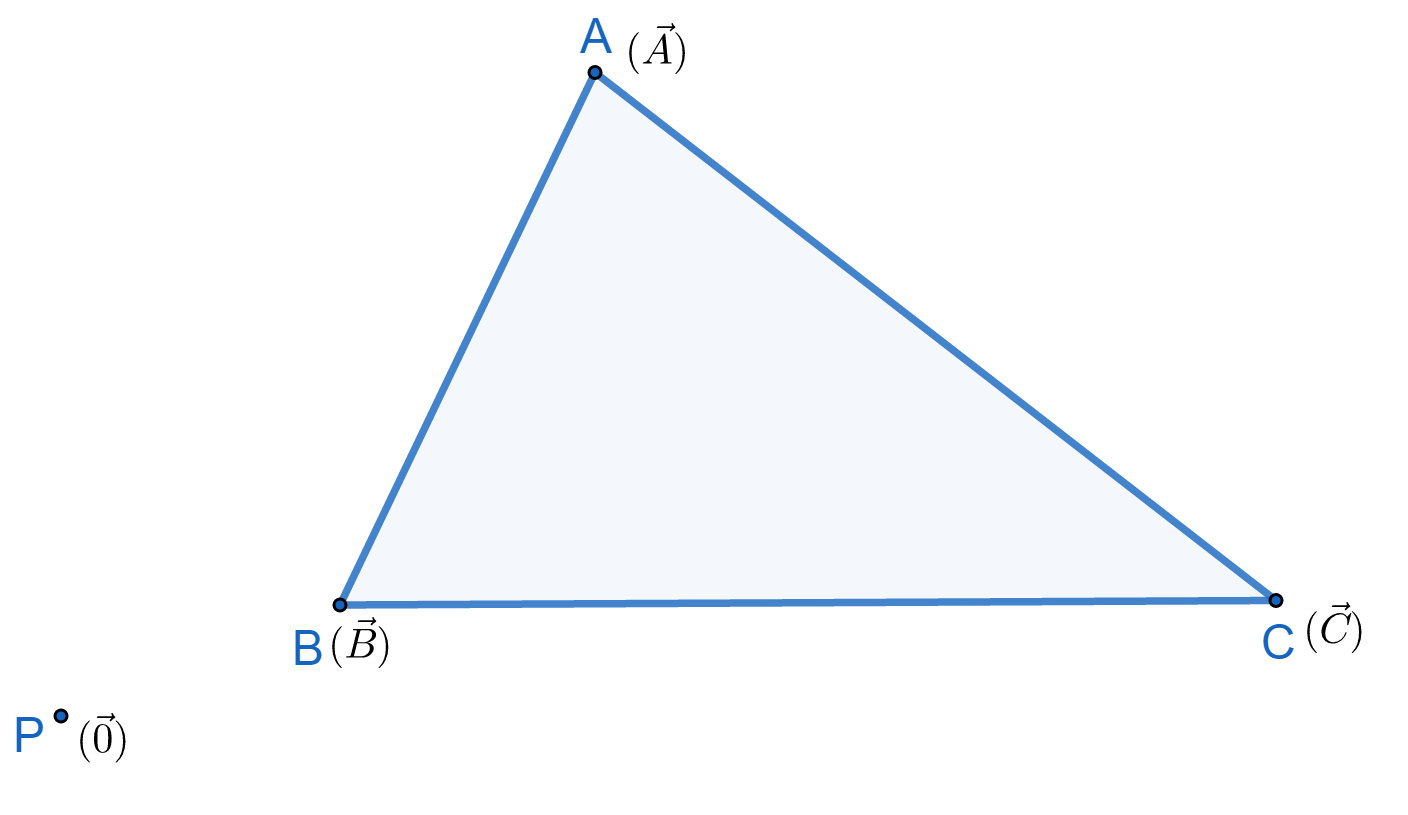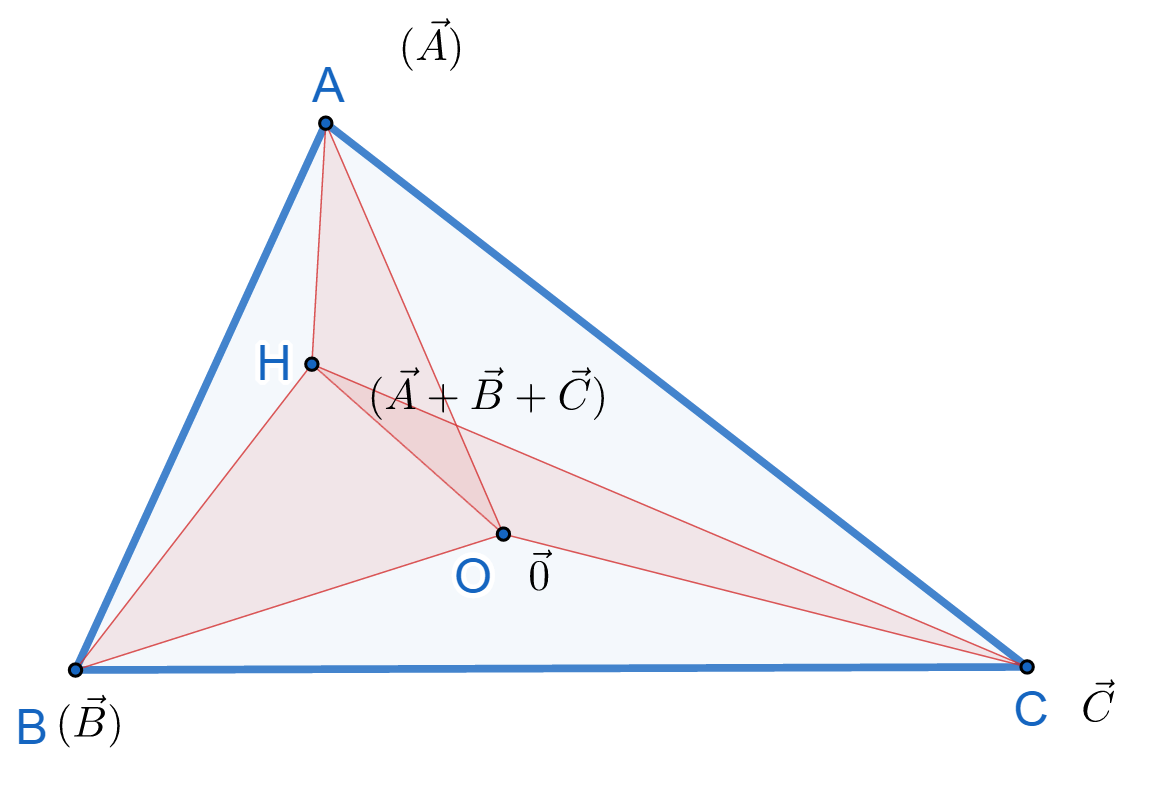New Home › Forums › Math Olympiad - RMO and INMO › Area problem
Tagged: geometry
- This topic has 1 reply, 2 voices, and was last updated 6 years, 1 month ago by
 Nitin Prasad.
Nitin Prasad.
- AuthorPosts
- May 27, 2019 at 1:48 pm #28194
 swastik pramanikParticipant
swastik pramanikParticipantLet (O) and (H) be the circumcenter and orthocenter of an acute angled triangle (ABC). Prove that the area of one of the triangles (AOH, BOH) and (COH) is the sum of the areas of the other two.
May 28, 2019 at 12:07 pm #28280 Nitin PrasadParticipant
Nitin PrasadParticipantFollowing is a proof using vectors. Let's denote position vector of point P by $$\vec{P}$$
Let $$\vec{O}=\vec{0}$$, and then observe that $$\vec{H}=\vec{A}+\vec{B}+\vec{C}$$
Now let signed area of a triangle ABC be (we consider its sign as positive if A,B,C are in antclockwise direction) denoted by (ABC)

Now observe that $$(ABC)=\frac{1}{2}\vec{BC}\times \vec{BA}=\frac{1}{2}(\vec{B}\times\vec{C}+\vec{C}\times\vec{A}+\vec{A}\times\vec{B})$$
Hence we have
- $$(AOH)=\frac{1}{2}(\vec{A}+\vec{B}+\vec{C})\times\vec{A}$$
- $$(BOH)=\frac{1}{2}(\vec{A}+\vec{B}+\vec{C})\times\vec{B}$$
- $$(COH)=\frac{1}{2}(\vec{A}+\vec{B}+\vec{C})\times\vec{C}$$

Now if not all three of them are 0, then there are two of the above three signed area have same sign. WLOG let's consider (BOH) and (COH) have same sign, then
$$|AOH|=|-(BOH)-(COH)|=|BOH+COH|=|BOH|+|COH|$$
Hence we have our desired result.
- AuthorPosts
- You must be logged in to reply to this topic.

